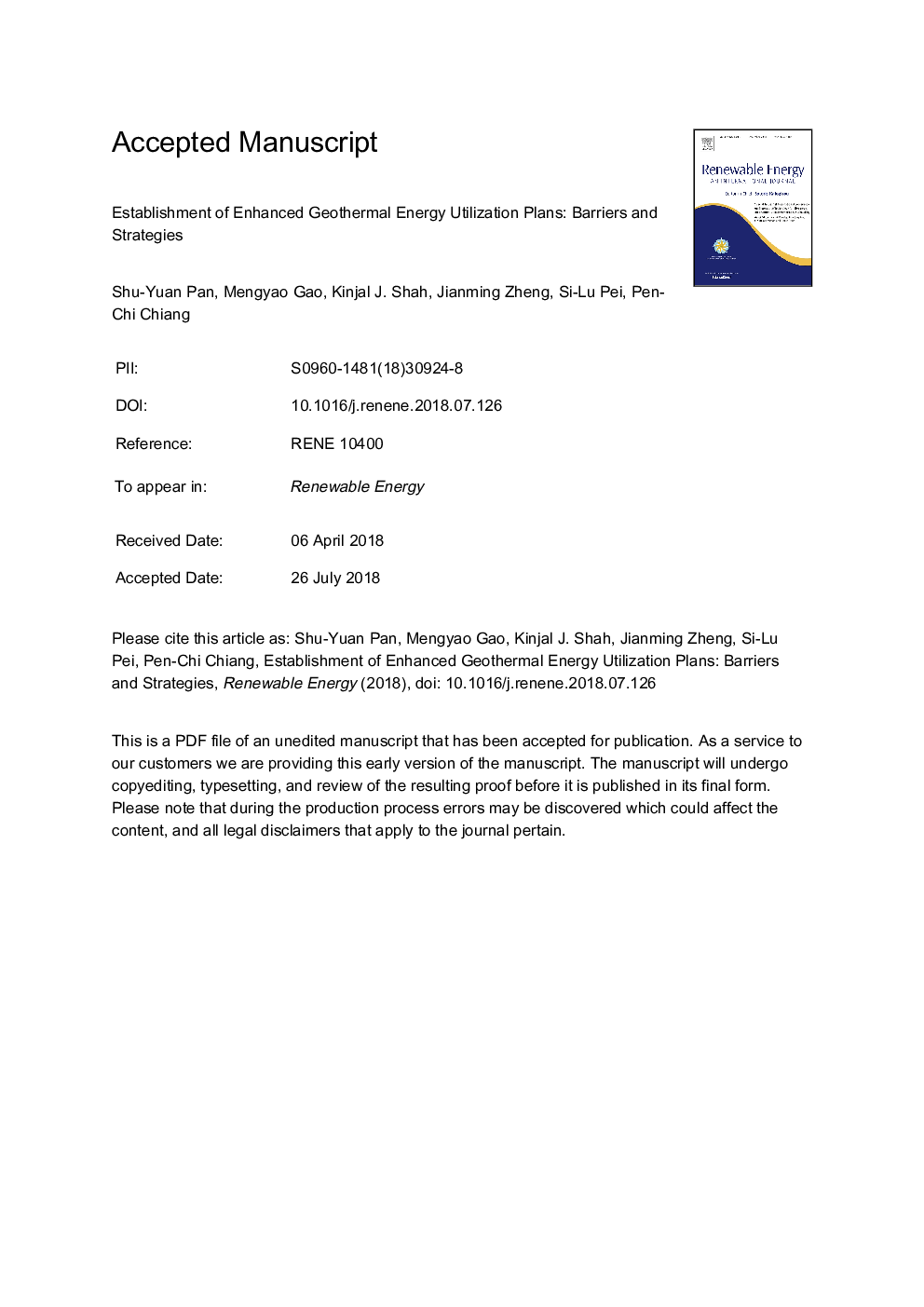| Article ID | Journal | Published Year | Pages | File Type |
|---|---|---|---|---|
| 6763544 | Renewable Energy | 2019 | 48 Pages |
Abstract
Geothermal energy has received tremendous attention as a largely untapped renewable resource that does not produce significant CO2 emissions during electricity generation. Worldwide installed capacity of geothermal energy plants has reached 14.3 GWe in 2017. However, widespread adoption of geothermal technologies should consider its potential environmental impacts. In this study, we first review the current state-of-the-art enhanced geothermal systems around the world, especially the United States, Philippines, Indonesia, Turkey and New Zealand. Then, we address the challenges and barriers to its adoption from the institutional, regulatory, technological and financial aspects. We also propose several strategies to implement geothermal energy plans, including (1) establishment of clear national energy utilization policies, (2) consolidation of geothermal laws and regulations, (3) engagement in geothermal potential assessment and periodic maintenance services, and (4) provision of fiscal incentives, financial supports and guarantees. Finally, we illustrate the implementation plans and business model of enhanced geothermal system deployment to conduct a demonstration plan for geothermal energy utilization. A case study of geothermal utilization in Taiwan, i.e., the Chingshui geothermal field, was discussed.
Keywords
Related Topics
Physical Sciences and Engineering
Energy
Renewable Energy, Sustainability and the Environment
Authors
Shu-Yuan Pan, Mengyao Gao, Kinjal J. Shah, Jianming Zheng, Si-Lu Pei, Pen-Chi Chiang,
